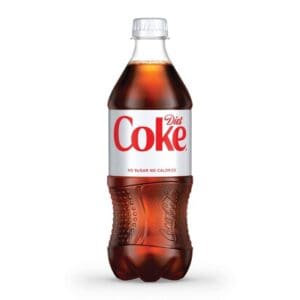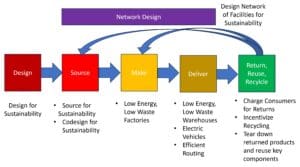[ad_1]

We have a plastic bottle problem. Around the world, 1 million plastic bottles are purchased every minute.
I am one of the culprits. I love to combine my morning walk with the consumption of caffeine. In my case, I consume what I call a “walking Diet Coke” – 16.9 ounces of a tasty wake-me-up beverage in a polyethylene terephthalate (PET) bottle.
The Coca-Cola Company assures me that PET is a “recyclable material” that can play “a role in the circular economy.” The American Beverage Association adds that “PET plastic is not single-use — it is 100% recyclable, versatile, and made to be remade.” I am looking at one of my walking Diet Cokes right now. On the side of the bottle label, in big red letters it says “Recycle Me.”
The PET Problem
But just because something can be reused, does not mean that it is. The ability for plastic bottles to be recycled depends on both the type of plastic and the availability of recycling facilities. According to the EPA, the recycling rate of PET bottles was 29.1% in the U.S. Most of the plastic that people put into blue recycling bins is headed to landfills or worse. Not even soda bottles, one of the most common items thrown into recycling bins — meets the threshold to be called “recyclable” according to standards set by the Ellen MacArthur Foundation New Plastic Economy Initiative. Plastic must have a recycling rate of 30% to reach that standard. A large portion of what consumers think of as “recycled” is winding up in garbage piles or bodies of water.
Plastic is expensive to collect and sort. There are thousands of different types of plastic, and none of them can be melted down together. Plastic also degrades after one or two uses. New plastic, on the other hand, is cheap and easy to produce. The result is that plastic trash has few markets, and the economics support a take-make-waste model more than a true circular economy.
But plastic, it has become clear, is also an environmental and health problem. The Great Pacific Garbage Patch is a collection of debris in the Pacific Ocean. It spans 620,000 square miles, about twice the size of Texas. And it continues to grow as more trash flows into it. Researchers believe that there will be more plastic than fish in our oceans by 2050. Plastic bottles don’t persist in their initial form. The bottles break down into smaller and smaller particles. We don’t know the long-term effects of breathing in and ingesting these particles. Do they contribute to miscarriages? Damage to lungs? Stress? Inflammation? The research is not definitive.
Solving the Problem
Plastic is a low cost, durable product that has allowed packaged foods to be purchased at lower cost with less wastage. We can’t simply ban all plastic. Packaging economics and the ability of industry to generate safe alternative solutions at scale come into play. Legislation, consumer behavior, and ESG initiatives by companies all must play a role.

Any company’s sustainability initiative must involve the end-to-end value chain. Two of the biggest users of PET for packaging are PepsiCo and the Coca-Cola Company. Both Coke and Pepsi produce sustainability reports.
Pepsi vs. Coke and PET Sustainability: Pepsi Wins
Pepsi’s target metrics include cutting virgin plastic from non-renewable sources per serving 50% by 2030. Another goal is to reduce their absolute tonnage of virgin plastic derived from non-renewable sources by 20% in the same timer period. Pepsi went backward on this target in 2022 by 2% on the first metric and 11% on the second. Their 2022 results were impacted by greater than anticipated business growth, as well as the limited availability and high cost of recycled content. In addition, they believed recent regulation would lead to more benefits than they received.
Pepsi has also piloted and launched a bioPET bottle in Mexico with renewable materials. The raw materials include switch grass, pine bark, and corn husks. They created the world’s first PET bottle made entirely from plant-based renewable resources. Pepsi gets credit for the experiment. But we don’t yet know if this plastic product can be produced economically at scale.
Coke’s goal is to reduce their use of virgin plastic derived from non-renewable sources by a cumulative 3 million metric tons between 2020–2025. That sounds good, it sounds like a big number, but without knowing the total tonnage of virgin plastic they use, this goal is not meaningful. We do know that in 2022 15% of the PET they used was recycled.
Both companies are “educating and encouraging consumers to recycle.” Both are partnering with a variety of NGO’s and upstream and downstream partners. Pepsi has been more active in investing to help improve the recycling infrastructure, but the current investments are too small to make much of a difference. In terms of marketing, I find Coke to be more guilty of greenwashing than Pepsi.
To sum it up, Pepsi wins, despite some backsliding in 2022, because their goal is more specific and thus probably more ambitious than Coke’s. It is tough, however, to compare the two companies because they do not use the same reporting targets.
Does that mean I will be drinking Diet Pepsi in PET containers on my walks? No. I’m switching to cans.
[ad_2]
Source link












